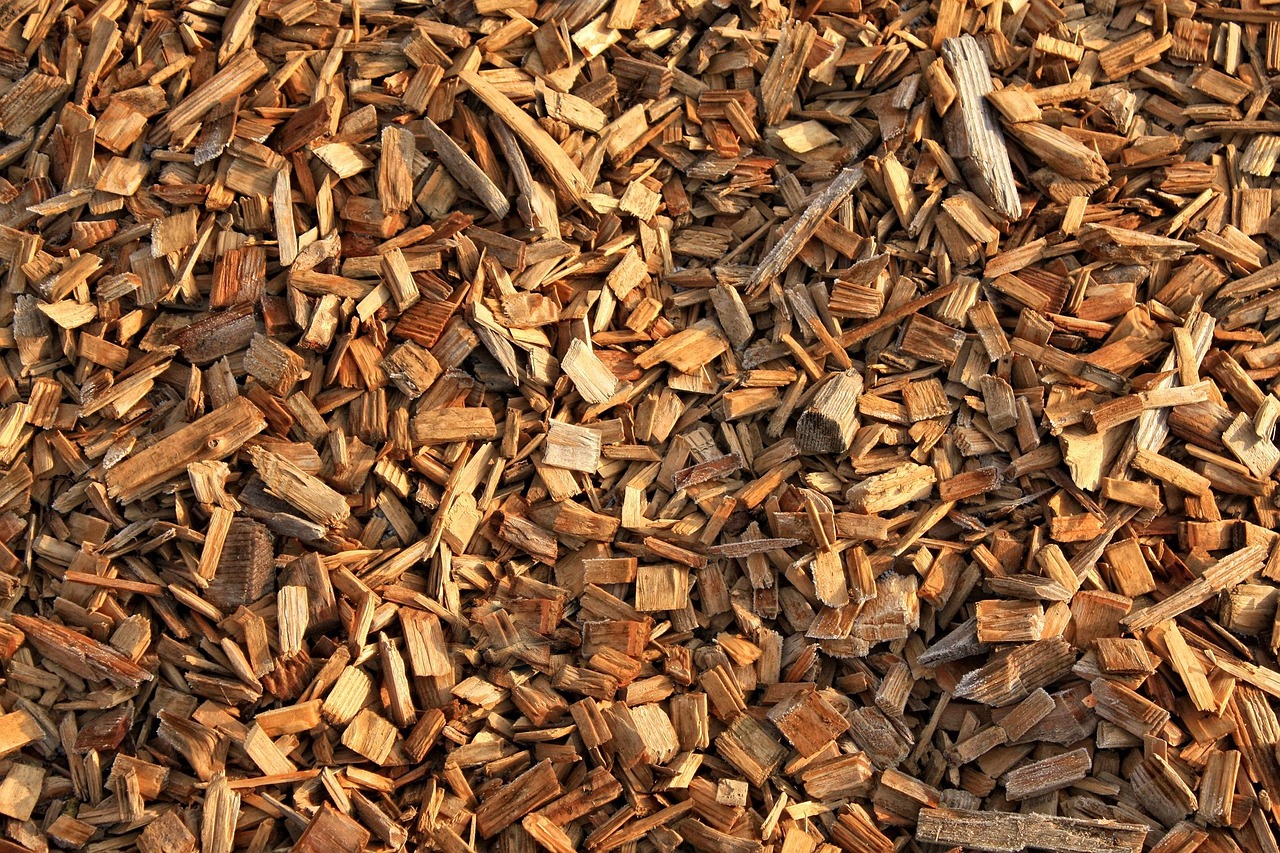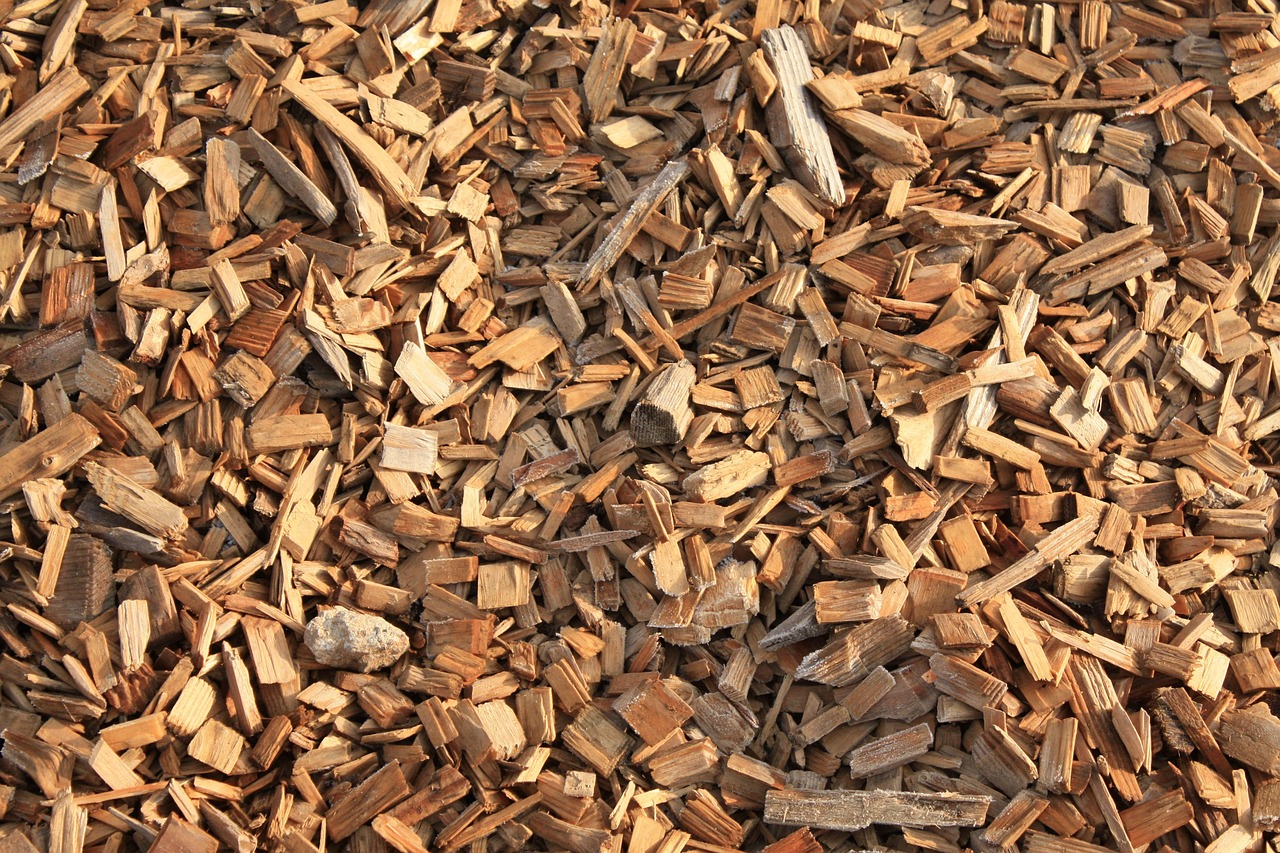To find free wood chips near you, check with local tree services, landscaping companies, and municipal waste departments. Many of these organizations offer free wood chips as a byproduct of their operations. Additionally, online platforms like Craigslist or Facebook Marketplace often have listings for free wood chips available in your area.
Understanding the Benefits of Wood Chips in Gardening
Wood chips are a valuable resource for gardeners. They serve multiple purposes, enhancing soil health, conserving moisture, and suppressing weeds. Utilizing wood chips can significantly improve the overall quality of your garden while also reducing the need for chemical fertilizers and herbicides.

One of the primary benefits of using wood chips is their ability to retain moisture in the soil. By covering the ground with a layer of wood chips, you can reduce evaporation rates. This is especially beneficial during hot summer months when plants require consistent moisture to thrive.
Moreover, wood chips add organic matter to the soil as they decompose. This organic matter enhances soil structure and fertility. It encourages beneficial microorganisms that contribute to a healthy ecosystem in your garden. The slow decomposition process means that wood chips can provide nutrients over an extended period, reducing the frequency of additional fertilization.
How to Source Free Wood Chips
Finding free wood chips involves a few straightforward steps. Here are some effective methods to consider:
- Local Tree Services: Contact local tree trimming companies. They often have excess wood chips they are willing to give away.
- Municipal Services: Many cities have yard waste programs that produce wood chips from tree debris. Check with your local waste management department.
- Community Boards: Use local community boards or online platforms such as Craigslist or Facebook Marketplace. These sites often have postings for free wood chips.
- Landscaping Companies: Reach out to landscaping businesses in your area. They may have leftover wood chips from previous projects.
Using Wood Chips in Your Garden
Once you acquire wood chips, there are various ways to utilize them effectively in your garden. Below are some practical applications:
- Mulching: Spread a layer of wood chips around plants and garden beds to control weeds and retain moisture.
- Pathways: Create natural walkways in your garden by laying down wood chips. This helps prevent mud and keeps feet clean.
- Composting: Add wood chips to your compost pile as a carbon source. Balance them with nitrogen-rich materials for effective composting.
- Soil Amendment: Mix decomposed wood chips into garden soil to improve texture and nutrient content.
Factors to Consider When Using Wood Chips
While wood chips are beneficial, there are some factors to keep in mind when using them in your garden:
- Type of Wood: Avoid using wood chips from treated lumber or toxic species like black walnut, which can harm plants.
- Size of Chips: Smaller chips decompose faster than larger ones. Consider the size based on your intended use.
- Aging Process: Fresh wood chips can tie up nitrogen in the soil as they decompose. It’s best to let them age for a few months before applying them directly to your garden.
| Benefit | Description |
|---|---|
| Moisture Retention | Helps keep soil moist, reducing the need for frequent watering. |
| Weed Suppression | Blocks sunlight from reaching weed seeds, helping to control their growth. |
| Soil Improvement | Enhances soil structure and adds nutrients as they break down. |
| Erosion Control | Helps prevent soil erosion during heavy rains by stabilizing the ground. |
Incorporating wood chips into your gardening practices can significantly enhance plant health and reduce maintenance efforts. Understanding how to source and properly use this resource will pay dividends in the long run. As you explore options for obtaining free wood chips, consider how they can transform your garden environment into a thriving ecosystem.
Considerations When Collecting Wood Chips
While sourcing wood chips can be straightforward, there are key considerations to take into account to ensure you are obtaining a quality product. Understanding these factors will help you make informed decisions and avoid potential issues.
Local Regulations and Guidelines
Before collecting wood chips, it is important to familiarize yourself with any local regulations or guidelines. Some municipalities may have specific rules regarding the collection of yard waste, including wood chips. Check with your local government or waste management department to ensure compliance.
- Permits: Some areas might require a permit for collecting materials from public lands or municipal facilities.
- Designated Collection Sites: Identify if there are designated sites for picking up wood chips to ensure you are following local policies.
Assessing the Quality of Wood Chips
The quality of wood chips can vary significantly based on their source. Here are some tips for assessing their quality before bringing them to your garden:
- Color and Texture: Look for chips that are brown in color, indicating they are aged and ready for use. Fresh green chips can be too acidic and may require additional aging.
- Contaminants: Check for signs of contamination, such as plastic or metal pieces. Ensure that the wood chips come from a clean source without treated lumber.
- Size Consistency: Aim for chips that are relatively uniform in size. This promotes even decomposition and enhances the aesthetic appeal in your garden.
Storage and Preparation of Wood Chips
After collecting wood chips, proper storage and preparation are essential for maximizing their benefits in your garden. Here are some effective strategies:
- Storage Location: Store wood chips in a dry, shaded area to prevent them from becoming soggy and moldy.
- Aging Process: If the wood chips are fresh, allow them to age for several months. This process helps reduce nitrogen depletion in the soil.
- Mixing with Other Materials: Consider mixing wood chips with other organic materials like grass clippings or leaves to create a balanced mulch that decomposes more evenly.
Integrating Wood Chips into Your Garden Design

Incorporating wood chips into your garden design can enhance both functionality and aesthetics. Here are several ways to effectively integrate them:
Creating Functional Zones
Wood chips can be used to delineate different areas in your garden, creating functional zones. For example:
- Pathways: Use wood chips to form natural pathways that guide visitors through your garden while preventing soil compaction.
- Sitting Areas: Create cozy sitting areas using wood chips, providing a comfortable surface for outdoor relaxation.
- Beds and Borders: Define garden beds or borders by surrounding them with a layer of wood chips, giving a clean and organized look.
Aesthetic Enhancements
In addition to their practical uses, wood chips can also add beauty to your garden. Consider the following:
- Color Variation: Mix different types of wood chips to create visual interest, using darker chips alongside lighter ones for contrast.
- Seasonal Changes: As wood chips decompose over time, they change color, providing dynamic aesthetics throughout the seasons.
Pest Control Using Wood Chips


Wood chips can also help manage pests in your garden by creating barriers that deter certain animals and insects. Here are some tips for using wood chips as a pest control method:
- Barrier Creation: Surround vulnerable plants with a thick layer of wood chips. This can deter slugs and snails from reaching your plants.
- Diatomaceous Earth Addition: For added pest protection, blend diatomaceous earth with your wood chips. This natural substance can help control insect populations without harming beneficial organisms.
Using wood chips strategically not only benefits your plants but also creates a more enjoyable gardening experience. By considering their quality, storage, and integration into your garden design, you can maximize the advantages that wood chips offer.
Composting with Wood Chips
Wood chips are an excellent addition to composting systems. They provide carbon, which is essential for balanced composting. By understanding how to effectively incorporate wood chips into your compost, you can enhance the quality of the final product.
Balancing Carbon and Nitrogen
In composting, it is crucial to maintain a balance between carbon-rich materials (browns) and nitrogen-rich materials (greens). Wood chips fall into the category of browns due to their high carbon content. Here are some tips for balancing these components:
- Mixing Ratios: A good rule of thumb is to aim for a carbon-to-nitrogen ratio of approximately 30:1. This means for every part of wood chips, you should add about three parts of nitrogen-rich materials like kitchen scraps or grass clippings.
- Layering: When building your compost pile, alternate layers of wood chips with layers of greens. This helps ensure even decomposition and aeration.
- Monitoring Moisture: Wood chips can absorb moisture, so monitor your compost pile to keep it adequately damp. If it becomes too dry, you may need to add water or more green materials.
Speeding Up Decomposition
Fresh wood chips can slow down the composting process because they tie up nitrogen as they break down. To speed up decomposition, consider the following methods:
- Shredding Wood Chips: Use a wood chipper or shredder to break down larger pieces into smaller particles. Smaller pieces decompose faster.
- Pre-Aging: Allow wood chips to age for several months before adding them to your compost system. This reduces their nitrogen-absorbing properties.
- Additives: Incorporate compost activators, such as manure or commercial compost starters, to boost microbial activity and hasten decomposition.
Wood Chips as Soil Amendments
In addition to their use in gardens and compost piles, wood chips can serve as effective soil amendments. They improve soil structure, drainage, and nutrient content over time.
Improving Soil Structure
When mixed into garden soil, wood chips can enhance its structure in several ways:
- Aeration: Wood chips create air pockets in the soil, which improves aeration. Good aeration is vital for root health and encourages beneficial soil microorganisms.
- Moisture Retention: As mentioned earlier, wood chips help retain moisture in the soil. This is particularly beneficial during dry periods, ensuring that plants have access to the water they need.
- Reducing Compaction: Adding wood chips can reduce soil compaction, making it easier for roots to grow and access nutrients.
Nutrient Release Over Time
As wood chips decompose, they release valuable nutrients back into the soil. This gradual nutrient release fosters healthy plant growth. Here are some key nutrients provided by decomposing wood chips:
- Nitrogen: Although fresh wood chips initially absorb nitrogen, once decomposed, they provide this essential nutrient back into the soil.
- Phosphorus: Wood chips contain phosphorus, which is crucial for root development and flowering in plants.
- Potassium: Potassium from decomposing wood chips supports overall plant health and aids in drought resistance.
Environmental Benefits of Using Wood Chips
Utilizing wood chips in your garden not only benefits the plants but also has positive environmental impacts. Here are some notable benefits:
Waste Reduction
Using wood chips helps reduce waste by repurposing materials that might otherwise end up in landfills. Many tree services generate excess wood chips during trimming or removal operations. By taking these off their hands, you help promote recycling within your community.
Biodiversity Enhancement
The use of organic materials like wood chips contributes to a healthier ecosystem. Here’s how they enhance biodiversity:
- Habitat Creation: Wood chips provide habitat for beneficial insects and microorganisms that contribute to a thriving garden ecosystem.
- Soil Health Improvement: The organic matter from decomposed wood chips supports diverse microbial life in the soil, which is essential for nutrient cycling.
Incorporating wood chips into your gardening practices enhances plant health while providing various environmental benefits. Understanding their role in composting, soil amendment, and biodiversity support will allow you to maximize the advantages of this valuable resource.
Additional Uses for Wood Chips
Beyond gardening, wood chips have various applications that can be beneficial both in residential and commercial settings. Understanding these alternative uses can help you maximize the value of this resource.
Animal Bedding
Wood chips can serve as an excellent bedding material for various animals. They are absorbent and can help control odors effectively. Here are some ways to use wood chips as bedding:
- For Livestock: Wood chips provide a comfortable and dry bedding option for larger animals like cows or horses. They keep the area clean and dry.
- For Poultry: Chickens benefit from wood chip bedding, as it helps manage moisture and provides a natural environment.
- For Small Pets: Small mammals such as rabbits and guinea pigs also find wood chips suitable for their pens, offering comfort and warmth.
Landscaping and Erosion Control
Wood chips are frequently used in landscaping projects to enhance aesthetics while also providing functional benefits:
- Ground Cover: Use wood chips as ground cover to reduce soil erosion on slopes or around trees. They help stabilize the soil and prevent runoff.
- Decorative Mulch: Spread wood chips in flower beds and around shrubs to create a visually appealing landscape while suppressing weeds.
Fuel Source
In some regions, wood chips are used as a renewable fuel source. They can be burned in specialized stoves or boilers designed for biomass fuel. This is an eco-friendly alternative to fossil fuels, providing a sustainable energy option.
Safety Considerations
While using wood chips offers many benefits, it is crucial to consider safety aspects as well. Here are some important points to keep in mind:
- Avoid Treated Wood: Ensure that the wood chips you use are sourced from untreated wood. Treated wood can contain harmful chemicals that may leach into the soil.
- Mold Awareness: Wood chips can harbor mold if stored improperly. Always check for any signs of mold before applying them to your garden.
- Pest Control: Certain pests may be attracted to wood chips. Monitor your garden regularly to prevent infestations.
Final Thoughts
Incorporating free wood chips into your gardening practices is a smart way to enhance plant health, improve soil quality, and promote environmental sustainability. From providing moisture retention and weed suppression to enriching the soil with nutrients, wood chips offer versatile benefits for both novice and experienced gardeners alike.
By sourcing wood chips responsibly from local tree services or municipal programs, you not only support your gardening efforts but also contribute to community recycling initiatives. Additionally, their diverse applications extend beyond gardening, providing options for animal bedding, landscaping, and even renewable energy solutions.
As you explore the various facets of using wood chips, remember to prioritize quality and safety. By following best practices in collection, storage, and application, you can fully harness the advantages of this valuable resource. The journey of transforming your garden into a thriving ecosystem does not have to be complicated or costly; with the right tools and knowledge, you can create a beautiful, sustainable space that benefits both you and the environment.
Embrace the potential of wood chips in your gardening journey and enjoy the many rewards they bring to your outdoor space.
